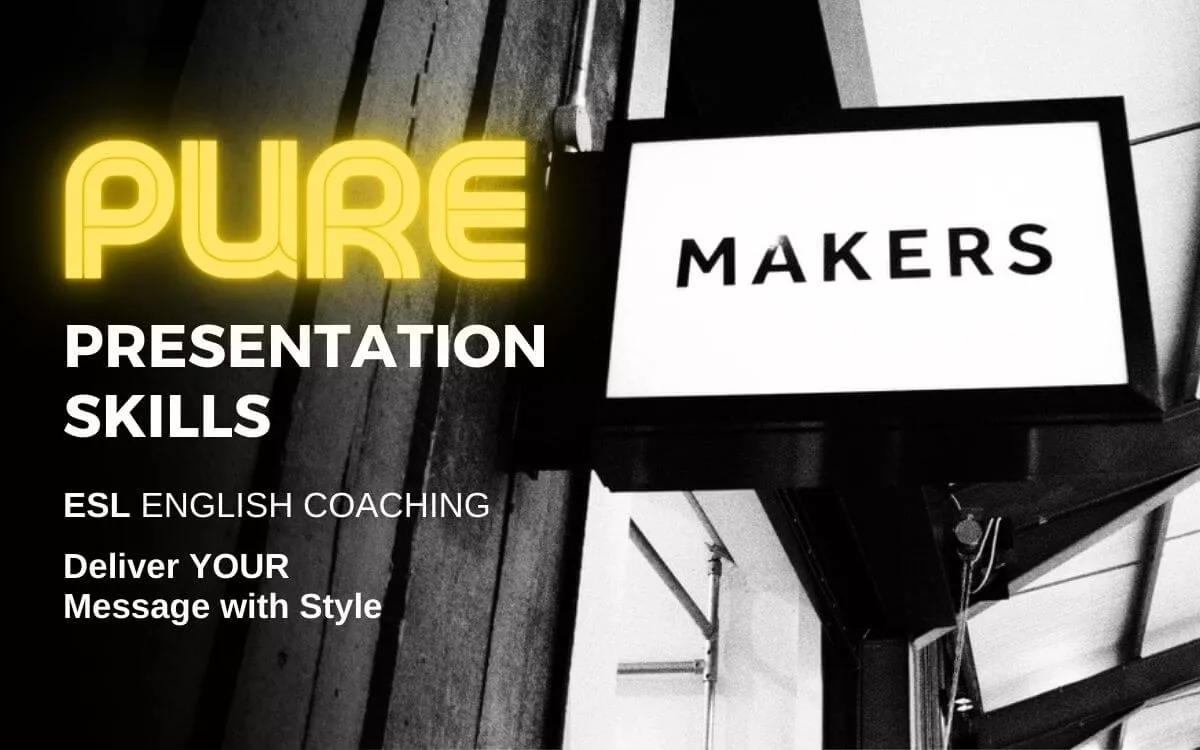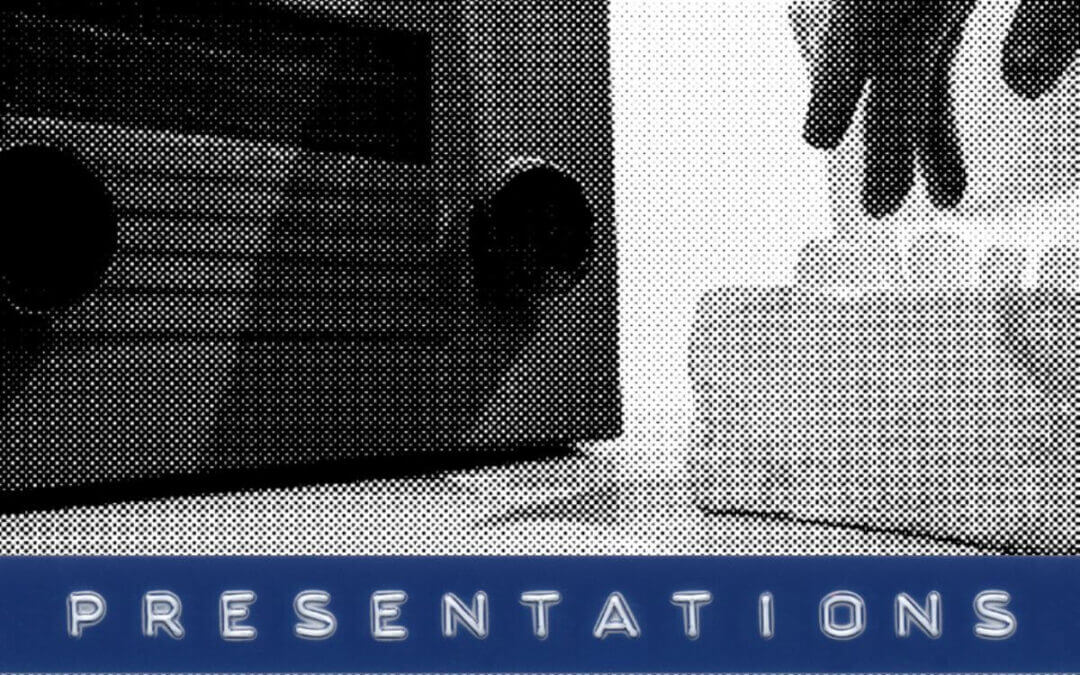If you use this article in an English Class for Art Students, begin by asking them which tips they would expect to see here.
How to improve your English for Presenting Work, Projects and Artist Talks
A Quick Summary
Get lots of practice, combined with dedicated private ESL Presentations Coaching.
Seek specialist one-to-one English coaching to refine your English presentation skills for your field.
Group classes will not provide the targeted support you need.
More than anything else, you need individual talk time. Lots of it!
Read on for 7 tips for making presentations in a second language.
Tip 01: Choose an ESOL Coach from your Field
If you are presenting scientific work, then choose an ESL coach with good scientific or technical knowledge (unless you will only be talking to a layperson community).
Likewise, Artists, Designers, Architects and Creatives should work with an ESL coach experienced in presenting art and design to the public.
If you are not sure of the difference between an English Teacher and English Coach, see here.
Tip 02: ‘Fine Tune’ Your Language
Be willing to work on certain phrases repeatedly until you have perfected them.
Add in more accurate and expressive adjectives.
It is also important to learn a variety of phrases to link ideas together coherently, this guides the listener through the content.
An English course in presentations will help you to do exactly this.
To fine-tune is to adjust precisely so as to bring to the highest level of performance or effectiveness (like an old dial radio).

03: Your Way is the Right Way
There’s no one ‘right’ way to make an artist talk or presentation.
If you are new to it, then watch a few examples and choose if you want to seem formal or enthusiastic.
Do you wish to appear to have all the answers – or are you are telling a more personal story of searching for them?
Ask yourself, who are your audience? What are they expecting? What are they hoping to learn?
This doesn’t mean necessarily that you have to build the talk around these points, but you could.
If you are not new to making presentations, then:
Above all, whatever your presentation style is in your own language – you want that shining through in English.
04: Stay in Control of the Information you Share
Consider how much you are going to share finished work – and how much the process of making.
For artists in particular, it’s easy to overshare in an attempt to win over the audience, but you don’t need to. Work out your parameters within practice runs – and stick to them.
You don’t need to share private content (techniques, research etc).
Practising your timing and outlining subjects in advance, will help you to control the information you share.
Don’t overshare in an attempt to win your audience.
Avoid the ‘Blurt’!

05: Don’t ‘Film Yourself and Watch it’
Some presentation experts advise filming yourself speaking – and watching the film to see if you hold your posture well, sound rushed or repeat a word or phrase too often.
It depends on your personality, but this approach could easily backfire and reinforce negative feelings and insecurities.
Above all, you need to feel brave and confident in front of an audience.
Instead of filming yourself, practice presenting in front of friends.
They can give you feedback about errors much more kindly than you are likely to give yourself.
Tip 06: Keep the Prize in Sight
Developing presentation skills in English is NOT the most exciting part of language learning – but you can be motivated by the results to push through and keep at it.
The results will be thrilling!
Tip 07: Use Visualisation Techniques
Make a list of the goals you can achieve when you feel confident presenting your work to audiences worldwide.
Some people like to journal this – or create a mood board. Where is your English going to take you? What does your new job look like? What can you do with the extra money you will earn?
The more real you make the goal feel, the more you will commit to the hard work required by the process.
“The more real you make the goal feel, the more you will commit to the hard work required by the process.”
Ruth, 2023
Further Tips for Presentations in ESL English
A few last pointers to help you with your English for Presentations training.
You need dedicated time and space to go into detail with your language coach.
This is the trainer who can develop your fluency and confidence, while also giving you precise error correction.
ESOL Presentation coaching is NOT a conversation class!
Presentation Skills Coaching is English for a Specific Purpose and is more expensive than a general English class (which more people are skilled to teach).
Expect to pay a professional price for a professional service.

English for Presentations Coaching
Pure | Presentation Coaching is a 1:1 group programme (which helps keep costs down).
It’s for artists, designers, micro-business owners, architects, and producers: professionals who need to perfect their answer to the question, ‘What do you make?’ for international presentations, collaborations and artist talks.
Our next session starts October 2024
It’s private coaching, and we only have 5 places.
If It’s Urgent
We also have a year-round ’Emergency’ Presentation Coaching for when you have a job interview/artist talk scheduled within a month.
It’s not the same thorough way to build up skills for a lifetime, but it’s a great way to ace a one-off opportunity.
Further Information
External links
Square Space has a good PDF guide to giving artist talks here.


Recent Comments